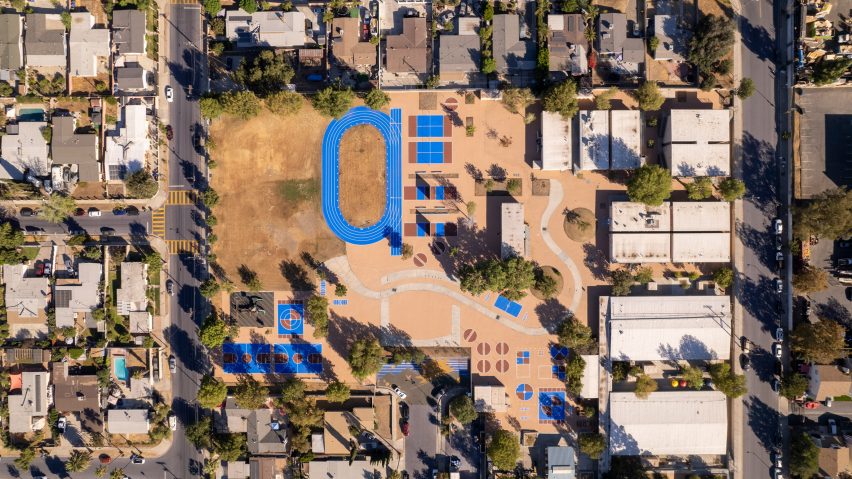
GAF applies solar-reflective coating to mitigate Los Angeles heat islands
American roofing firm GAF has completed the first phase of a public-private initiative that seeks to mitigate urban heat in Los Angeles through solar-reflective coating.
The GAF Cool Community Project completed the first phase of their public project in Los Angeles' Pacoima, covering asphalt roads and public areas in a 10-block radius to see if a reflective coating might reduce the effects of urban heating.
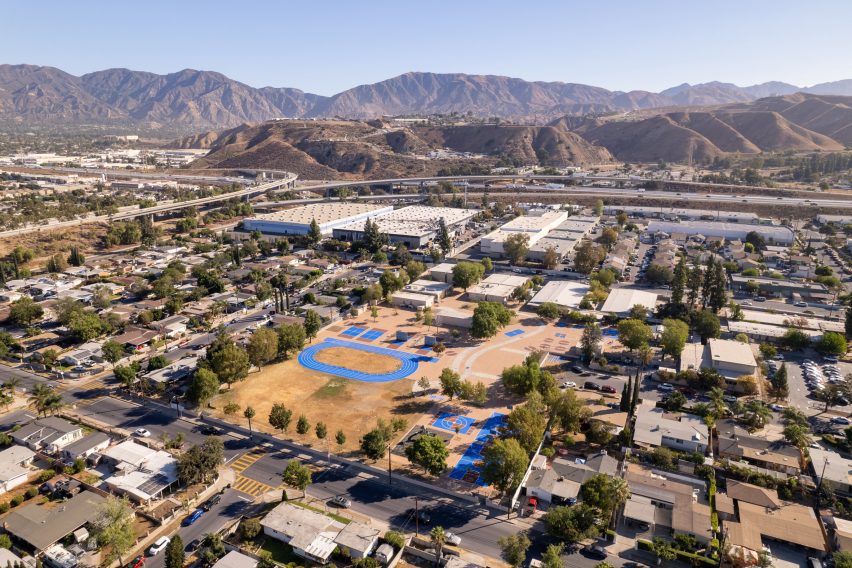
Members of the GAF team and its street coating arm Streetbond worked with NGOs and city officials including the Global Cool Cities Alliance, Climate Resolve, and the Los Angeles Bureau of Street Service to coat over 700,000 square feet (65,032 square metres) of the neighbourhood's pavement.
The project was initiated to mitigate the heat in heavily paved neighbourhoods, a problem in urban areas sometimes referred to as "heat islands".
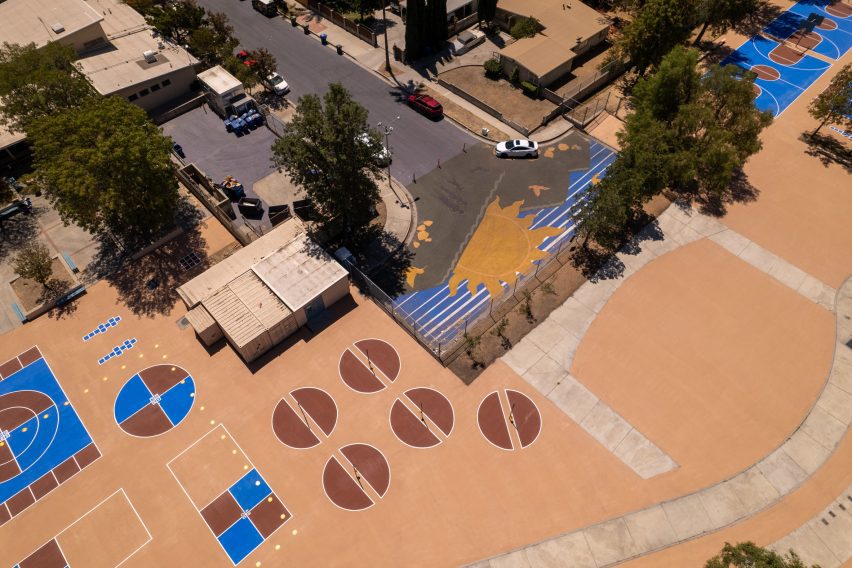
"This is one of the hottest neighborhoods in Los Angeles," said Streetbond general manager Eliot Wall.
"There's not a lot of alternative solutions. There are not a lot of shade structures. There are not a lot of trees – things that we also believe are necessary to help combat this – but this was something that without any other structural changes you could do tomorrow."
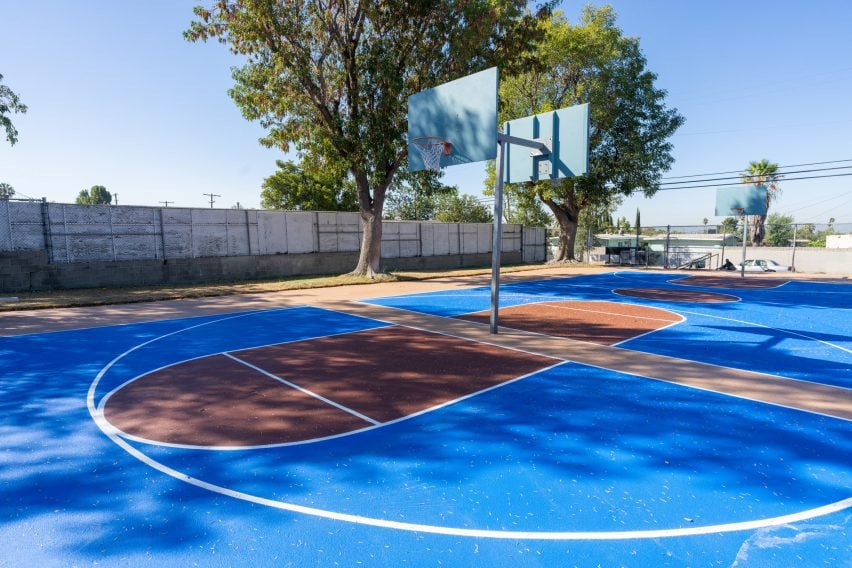
Because asphalt needs to be sealed and coated in dark colours to reduce tire marks and glare, it traps heat and holds it at street level.
The team's solution was to paint over roads, parking lots and recreational areas with a proprietary coating that the company says may reduce the heat effect by 10-12 degrees Fahrenheit (5.5-6.6 degrees Celsius). The coating comes in a variety of different colours, with brighter colours used for recreational areas and dark ones for the roads.
The coating can be applied directly on top of preexisting asphalt. It can be applied by hand or by a paint-spraying machine.
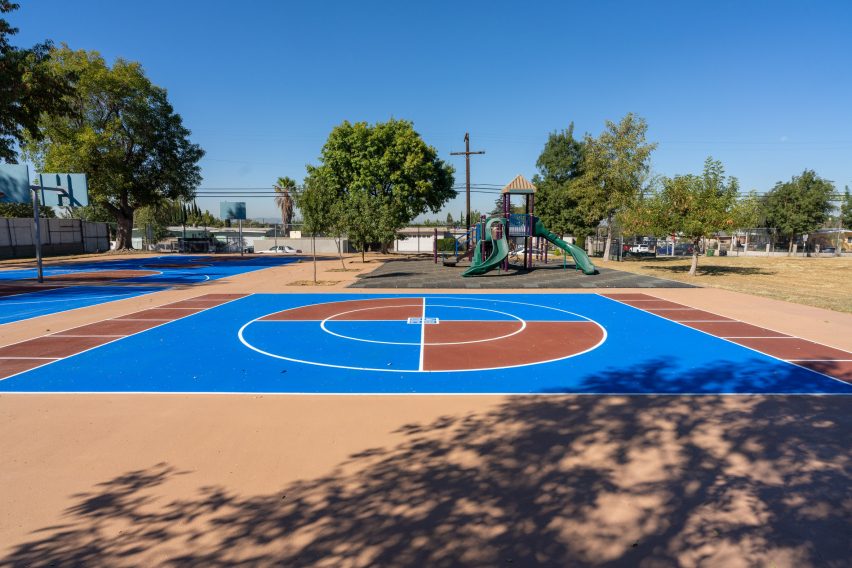
Instead of simply lining sections of street with the product, the team wanted to test how the coating could affect the ambient temperature of the neighbourhood as a whole.
Some of the more recreational areas within the project's scope, such as a basketball court and public park, were coated with colourful paint mocked up in patterns approved by the residents and a mural by local artist Desiree Sanchez was commissioned to be completed with the coating.
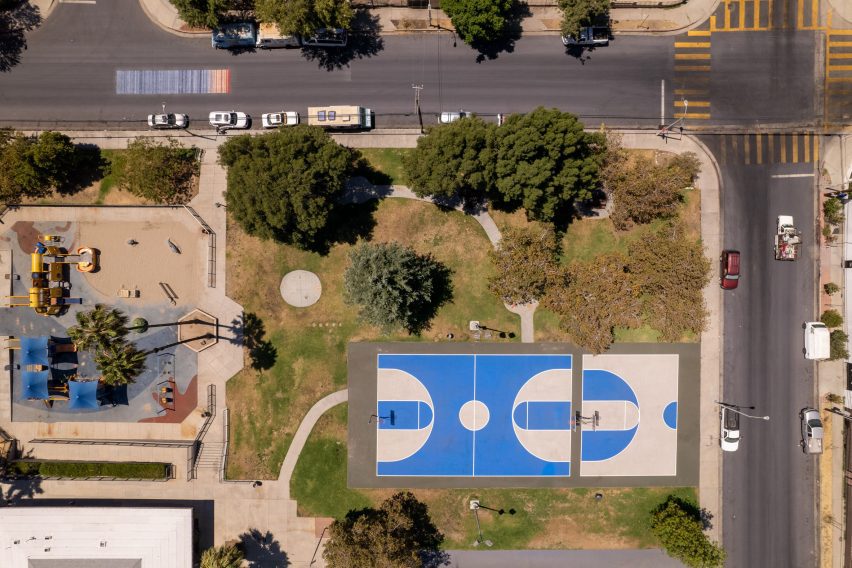
Phase one of the project was completed last year and now the team is utilising a variety of measuring systems to monitor the heat in the neighbourhood as the summer approaches. Wall said that the felt effects of the coating are "pretty much instantaneous".
"The community members themselves are saying it feels cooler," he said.
Since the application last summer, the team has noted not only a drop of up to three degrees Fahrenheit (1.6 degrees Celsius) but changes in temperature downwind from the coated area.
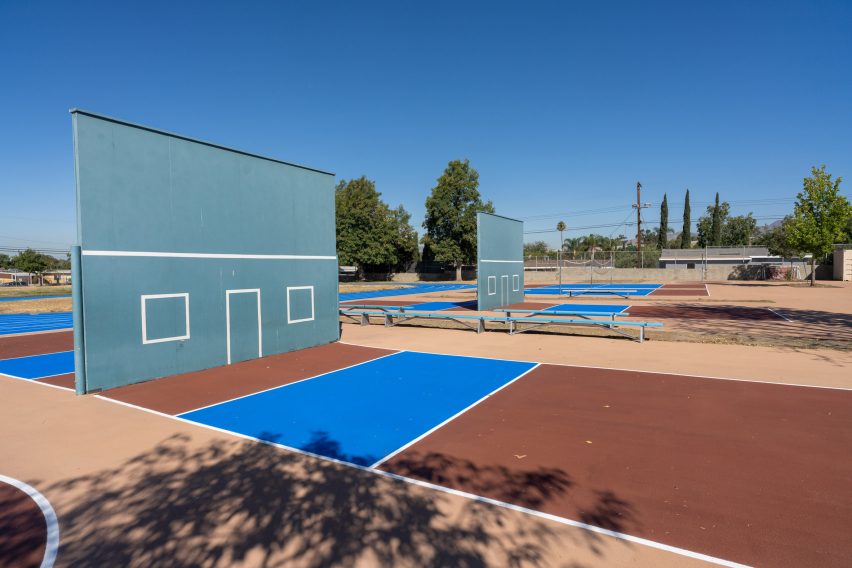
GAF director of building and roof science Jennifer Keegan added that there could added benefits from cooling large urban areas beyond the experience on the street.
Typically, the conversation around cooling technologies is limited to the application of materials on roofs and for cooling inside buildings, but paved public spaces present opportunities for bringing down the heat in the area in general.
"Not only are we helping the environment with that perspective of reducing the urban heat island effect, and if we keep our cities cooler, we're reducing our carbon footprint," she said.
Wall and Keegan said that the initiative hopes to expand the procedure to other areas that suffer from the heat island effect.
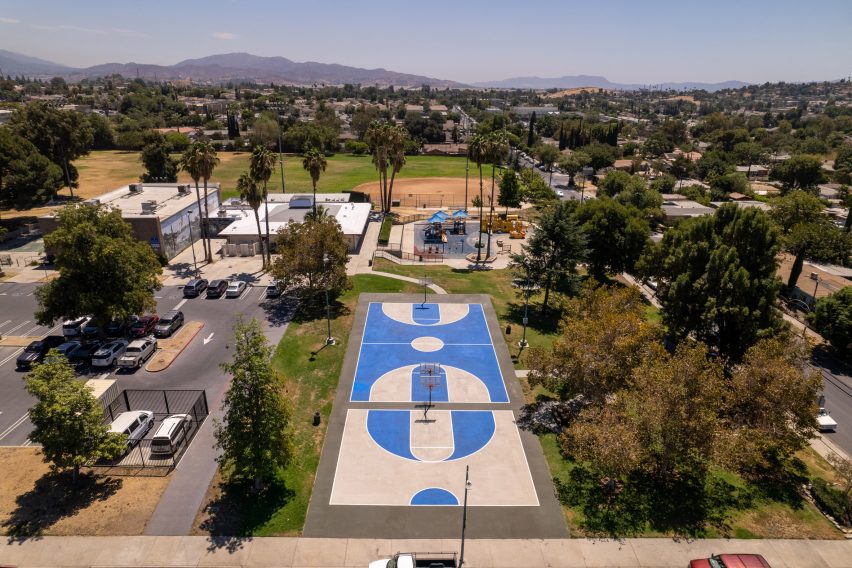
Other products that have been introduced to help reduce heat include a "chameleon-like" facade material developed by researchers at the University of Chicago.
Last year, Dezeen contributor Smith Mordak put together a guide for different strategies to reduce urban heating, read it here.
The photography is courtesy of GAF.